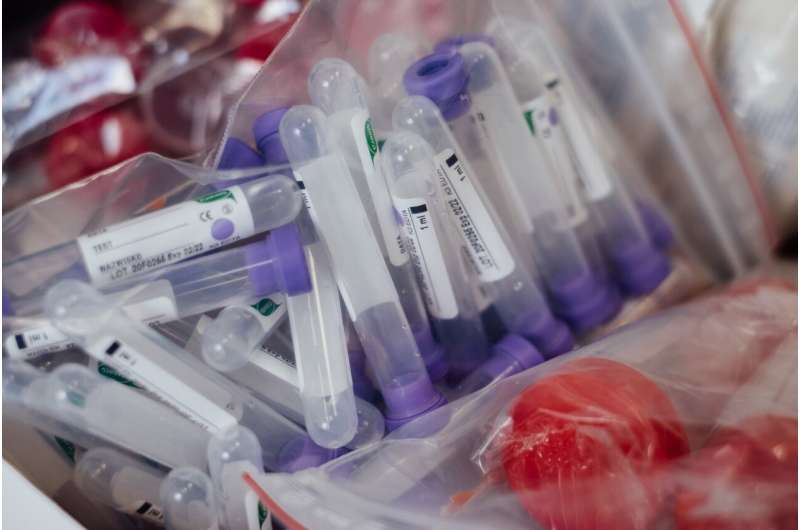Credit: Unsplash/CC0 Public Domain
COVID-19 remains stubbornly inconsistent. More than a million people have died and 35 million have been diagnosed, but a large fraction of people infected with the coronavirus—about 45%, according to recent estimates—show no symptoms at all.
A retrospective study of 52 COVID-19 patients, published this week in mSphere, an open-access journal of the American Society for Microbiology, may help researchers better understand why not everyone show symptoms of the disease. The study's authors found that asymptomatic patients hosted viral loads comparable to those of symptomatic patients, but asymptomatic patients showed higher levels of lymphocytes (a type of white blood cell responsible for immune responses), cleared the viral particles faster, and had lower risks of long-term complications. Further analyses suggested the interaction between the virus and the immune system likely played a role in that process.
"Our findings suggested an important role for lymphocytes, especially T cells, in controlling virus shedding," said virologist Yuchen Xia, Ph.D., at Wuhan University's School of Basic Medical Sciences, in China, who worked on the new study.
The wide range of COVID-19 symptoms is well documented. Asymptomatic carriers, on the other hand, often go undiagnosed but can still shed the virus and spread it to others. Understanding why some patients get sick and others don't is one of the most important challenges in curbing the pandemic, Xia said. "They may cause a greater risk of virus transmission than symptomatic patients, posing a major challenge to infection control."
Xia and his colleagues studied throat swabs and blood samples collected from patients at Renmin Hospital of Wuhan University, including 27 who had been admitted for complications related to COVID-19 and 25 asymptomatic patients who had been admitted for other reasons but tested positive for the SARS-CoV-2 virus upon arrival. The researchers used the throat swabs to assess viral load, and on the blood samples they ran tests to measure immunoglobins, cytokines, and immune cells.
Although both groups of patients had comparable viral loads, asymptomatic patients showed a statistically significant increase in number of CD4+ cells, white blood cells that fight infection, compared to symptomatic patients. Like previous studies, the new analysis also showed that symptomatic patients were more likely to show impaired liver function than asymptomatic patients. In contrast to other work, however, the new research did not find significant differences in cytokine levels between the two groups.
Xia's group recently began collaborating on a larger follow-up study with researchers in Germany, analyzing blood samples from more than 100 patients with severe COVID-19 symptoms and 30 patients with mild symptoms. They also plan to conduct animal studies to better understand the role of T cells in viral shedding.
Xia said he hopes this study will bring attention to the importance of including transmission from asymptomatic people in widespread efforts to curb the pandemic. "More public health interventions and a broader range of testing may be necessary to control COVID-19," he said.
More information: Xianguang Yang et al. Epidemiological Investigation and Prevention Control Analysis of the Longitudinal Distribution of COVID-19 in Henan Province, China, mSphere (2020). DOI: 10.1128/mSphere.00867-20
Provided by American Society for Microbiology
























